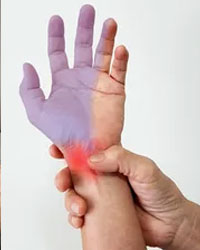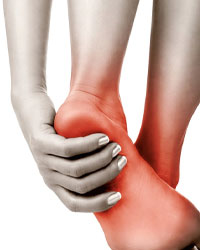Dizziness & Vertigo in Edmonton
Dizziness and vertigo are common but often misunderstood symptoms that can interfere with daily activities. Dizziness can describe a range of sensations, including lightheadedness or feeling unsteady, while vertigo is a specific type of dizziness that creates the sensation of spinning or motion when there is no actual movement. Both conditions can be caused by various factors, but physiotherapy can help alleviate symptoms and improve balance and mobility. Our clinic in Edmonton provides physiotherapy for dizziness and vertigo, helping individuals regain stability and control.
Common Causes of Dizziness and Vertigo
Dizziness and vertigo can result from a variety of causes, ranging from issues with the inner ear to problems with the brain or nervous system. Some of the most common causes include:
Benign Paroxysmal Positional Vertigo (BPPV)
BPPV is one of the most common causes of vertigo. It occurs when small crystals in the inner ear become dislodged and interfere with balance signals, leading to brief episodes of dizziness triggered by certain head movements.
Inner Ear Infections
Infections affecting the inner ear, such as labyrinthitis or vestibular neuritis, can disrupt balance and cause dizziness. These conditions may result in vertigo, along with symptoms like nausea or ear ringing.
Vestibular Migraines
Migraines can affect the vestibular system, leading to dizziness or vertigo, even without a headache. These episodes may be accompanied by visual disturbances, nausea, or sensitivity to light and sound.
Low Blood Pressure (Orthostatic Hypotension)
A sudden drop in blood pressure, especially when standing up quickly, can cause lightheadedness and dizziness. This condition can be exacerbated by dehydration, medication, or prolonged bed rest.
Anxiety and Stress
While less commonly the primary cause, anxiety and stress can trigger dizziness or a sense of lightheadedness. The body’s response to stress may impact the inner ear or affect circulation, contributing to dizziness.
Symptoms of Dizziness and Vertigo
While dizziness and vertigo are often used interchangeably, they can present with distinct symptoms. It’s important to differentiate between the two for proper treatment.
Dizziness Symptoms:
- Lightheadedness or feeling faint
- Unsteadiness or a feeling of being off-balance
- Sensation of floating or feeling “spacey”
- Difficulty concentrating
Vertigo Symptoms:
- Spinning sensation or feeling like the room is moving
- Nausea or vomiting due to the spinning sensation
- Loss of balance, especially when standing or walking
- Episodes triggered by changes in head position (e.g., turning the head or lying down)
How Physiotherapy Helps with Dizziness and Vertigo
Physiotherapy plays a key role in the management and treatment of dizziness and vertigo. Through targeted exercises, physiotherapists can help individuals regain balance, reduce symptoms, and improve their overall quality of life. Some common physiotherapy techniques include:
Vestibular Rehabilitation Therapy (VRT)
VRT is a specialized form of therapy designed to reduce dizziness and vertigo caused by inner ear problems. It involves exercises that target the vestibular system (the system responsible for balance), helping the brain compensate for any imbalances. The exercises gradually improve the brain’s ability to process balance signals, reducing dizziness over time.
Canalith Repositioning Maneuvers
For conditions like BPPV, physiotherapists may perform specific maneuvers, such as the Epley maneuver, to reposition the dislodged crystals in the inner ear. These maneuvers help restore normal balance function and relieve the spinning sensation.
Balance and Strength Training
Improving overall strength and balance can help reduce the risk of falls and the intensity of dizziness. Physiotherapists can guide patients through exercises to improve posture, stability, and coordination.
Postural Training
Learning how to adjust posture and avoid positions that trigger dizziness can significantly reduce symptoms. Physiotherapists can teach proper body mechanics to help manage dizziness in daily activities.
Gaze Stabilization Exercises
These exercises help improve eye control during head movements. They are particularly useful for individuals with vertigo caused by vestibular issues, as they help prevent dizziness when moving the head or eyes.
When to Seek Physiotherapy for Dizziness or Vertigo
If dizziness or vertigo becomes frequent or interferes with daily activities, it’s important to seek medical advice and consider physiotherapy. Symptoms that should prompt a visit to a healthcare provider include:
- Dizziness or vertigo that lasts for more than a few minutes
- Sudden onset of severe vertigo or dizziness
- Difficulty standing or walking due to dizziness
- Episodes that interfere with daily activities or work
- Unexplained dizziness associated with other symptoms like vision changes, difficulty speaking, or numbness
Support for Dizziness and Vertigo in Edmonton
If you are experiencing dizziness or vertigo, physiotherapy can be a helpful approach to manage and alleviate symptoms. Our clinic in Edmonton provides physiotherapy to help improve balance, mobility, and overall function for those dealing with dizziness and vertigo.
If you are looking for physiotherapy support for dizziness or vertigo, contact us today to book an appointment.















